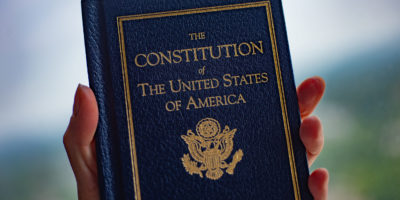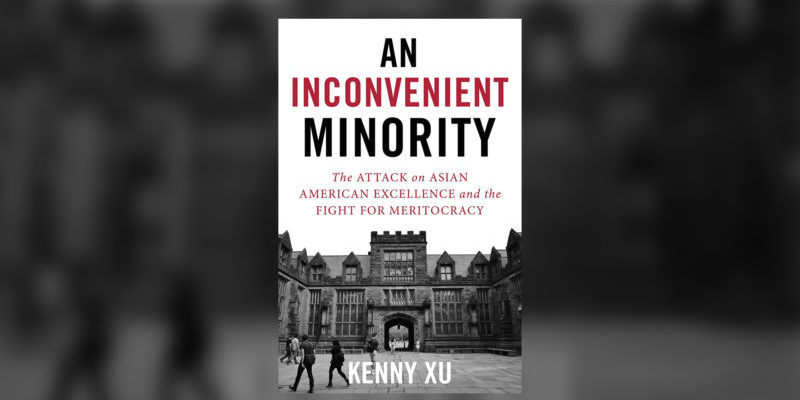One of today’s most vexing Supreme Court cases is Students for Fair Admissions v. Harvard, which has brought anti-Asian discrimination to the forefront of the current cultural discourse. SFFA (Students for Fair Admissions) contends that Harvard’s “race-conscious” admissions process violates the Constitution by disadvantaging Asian American applicants based upon their race, while Harvard argues that campus diversity goals justify their race-based process.
Most of the reasoning behind Harvard’s admissions process comes from critical race theory (CRT), a theory of race which originated with Harvard University. Another hot topic recently, critical race theory teaches that America is divided into privilege and oppressed groups based on race. Negative aspects of modern society follow from that dichotomy, and the only way to fix it is to revolutionize the way we think about race, culture, and society.
Under the critical race framework, “white supremacy” covers a lot of different phenomena. Everything from blatant discrimination, to the existence of English grammar, to choosing not to riot are included under the term. And in the words of social justice activist and author Ibram X. Kendi, “The only remedy to racist discrimination is anti-racist discrimination. The only remedy to past discrimination is present discrimination. The only remedy to present discrimination is future discrimination.” In order to combat white supremacy (however broadly defined), critical race theorists view “antiracist” discrimination as the only legitimate response.
However, with the emergence of several racial groups that have come to be just as successful as whites, Critical Race Theorists came up with the term “white adjacency.” Robin DiAngelo, author of the now infamous book “White Fragility,” defines it this way: “The closer you are to whiteness—the term often used is white-adjacent—you’re still going to experience racism, but there are going to be some benefits due to your perceived proximity to whiteness. The further away you are, the more intense the oppression’s going to be.”
According to critical theorists, Asian Americans are the most white adjacent minority. They go so far as to say that Asians don’t count as “people of color,” and even invented the term “BIPOC: (Black and Indigenous people of color) specifically to exclude Asian and other “white adjacent” minorities,
What does this mean? In my new book, An Inconvenient Minority, I tell the story of the many Asian Americans who are harmed by an ideology that penalizes their success. Progressives “call out Asians for either trying to be like white people or benefitting from systems that prop up white dominance.” Under critical race theory, it also means they are complicit in upholding white supremacy. To be white adjacent is to benefit from the systems of oppression that America was allegedly founded upon.
Applying the words of Kendi, then, means that Asians are a privileged group in which discrimination is justified, to make room for the “truly” oppressed.
But is the concept of white adjacency actually valid? In fact, white adjacency is simply a rhetorical tool to discriminate against Asian Americans. It’s also an implicitly racist concept that devalues other races, meritocracy, and Asian culture.
The idea of white adjacency hinges on the overwhelming success of Asian Americans in this country. It emerges from the fact that Asian Americans have the highest per capita income, lowest per capita crime rates, and highest rates of college education. In fact, Asian Americans score better on average than whites on all of these variables.
The problem is that critical race theory implicitly defines every good societal outcome as white. Even if your family came from China or India, being educated and achieving a high degree of personal success is deemed “white” behavior. This is racist in multiple ways. Obviously, it puts Asian Americans into a white adjacent box that completely ignores their unique cultures and struggles. Furthermore, it implies by default that other races aren’t successful, talented, or educated. If being rich and successful are “white” characteristics, then doesn’t the logic follow that being poor and lazy are Black characteristics? Despite pretending to care about diversity and inclusion, critical race theory is actually racist in the way it implicitly categorizes groups of people.
Asians are harmed from multiple directions by the white adjacency myth. Asian Americans have struggled in this country as well – let us not forget the Chinese Exclusion Act or Japanese Internment. Yet, the concept is frequently used to silence Asian Americans when they attempt to explain their own struggles as a minority in America. It also gives universities such as Harvard the required justification to discriminate against Asian American applicants to their schools, who blow every other race out of the water academically. Asians are an inconvenient minority because their high performance is a threat to both prevailing woke narratives surrounding diversity, and to continued, largely white, ruling class hegemony in the Ivy League schools. As the coastal elite continue to double down on critical race theory, Asian Americans will continue to be the thorn in their side.
Asian Americans are not deficient white people or “white adjacent.” They are unique individuals from distinct cultures, each with our own struggles and backgrounds. Their individual successes are theirs alone, and defining those successes as “white” is racist in myriad ways. Asian Americans cannot simply be designated by Critical Race Theory as a prop for white supremacy; we are the inconvenient minority.
via New Discourses






